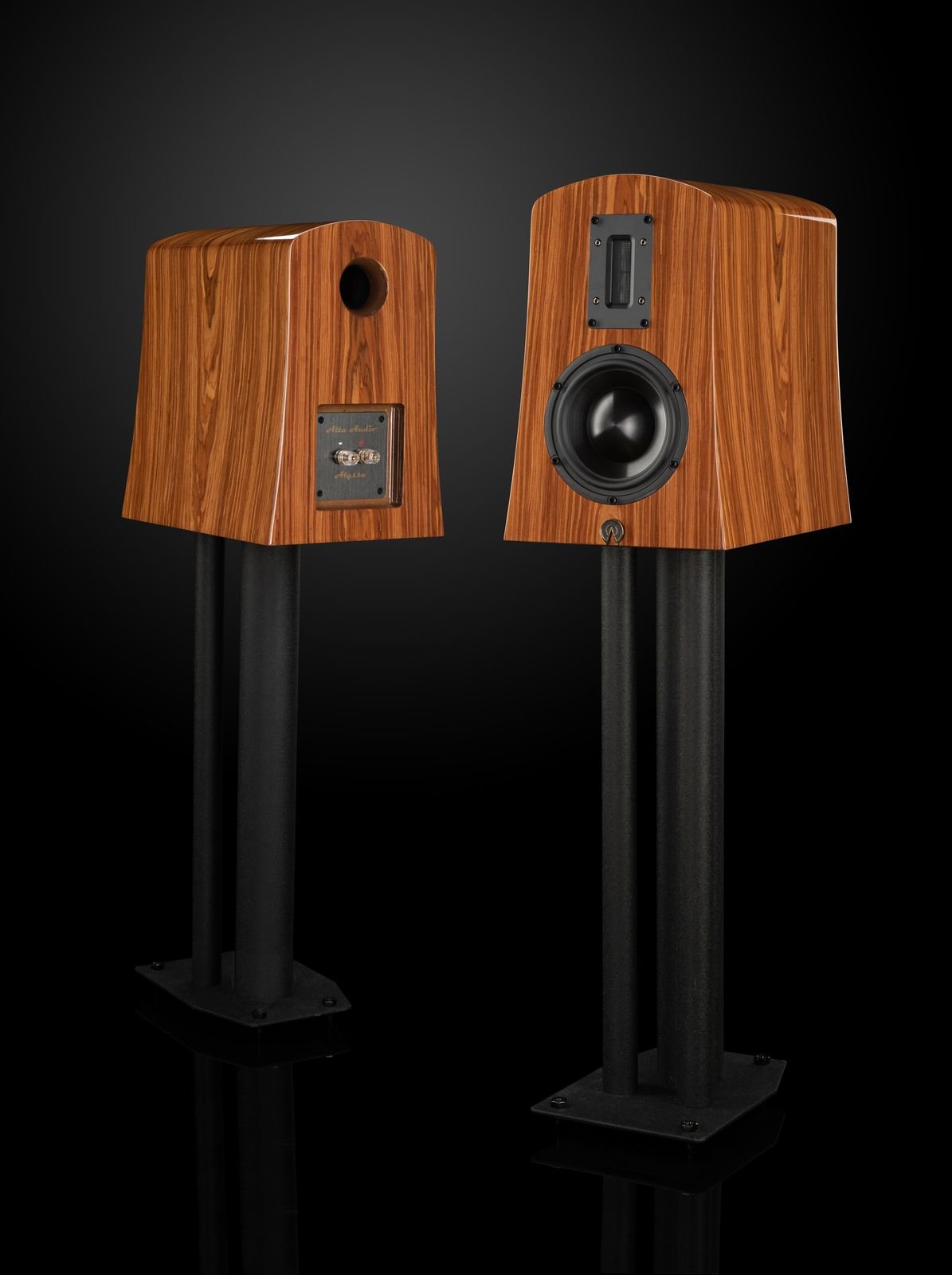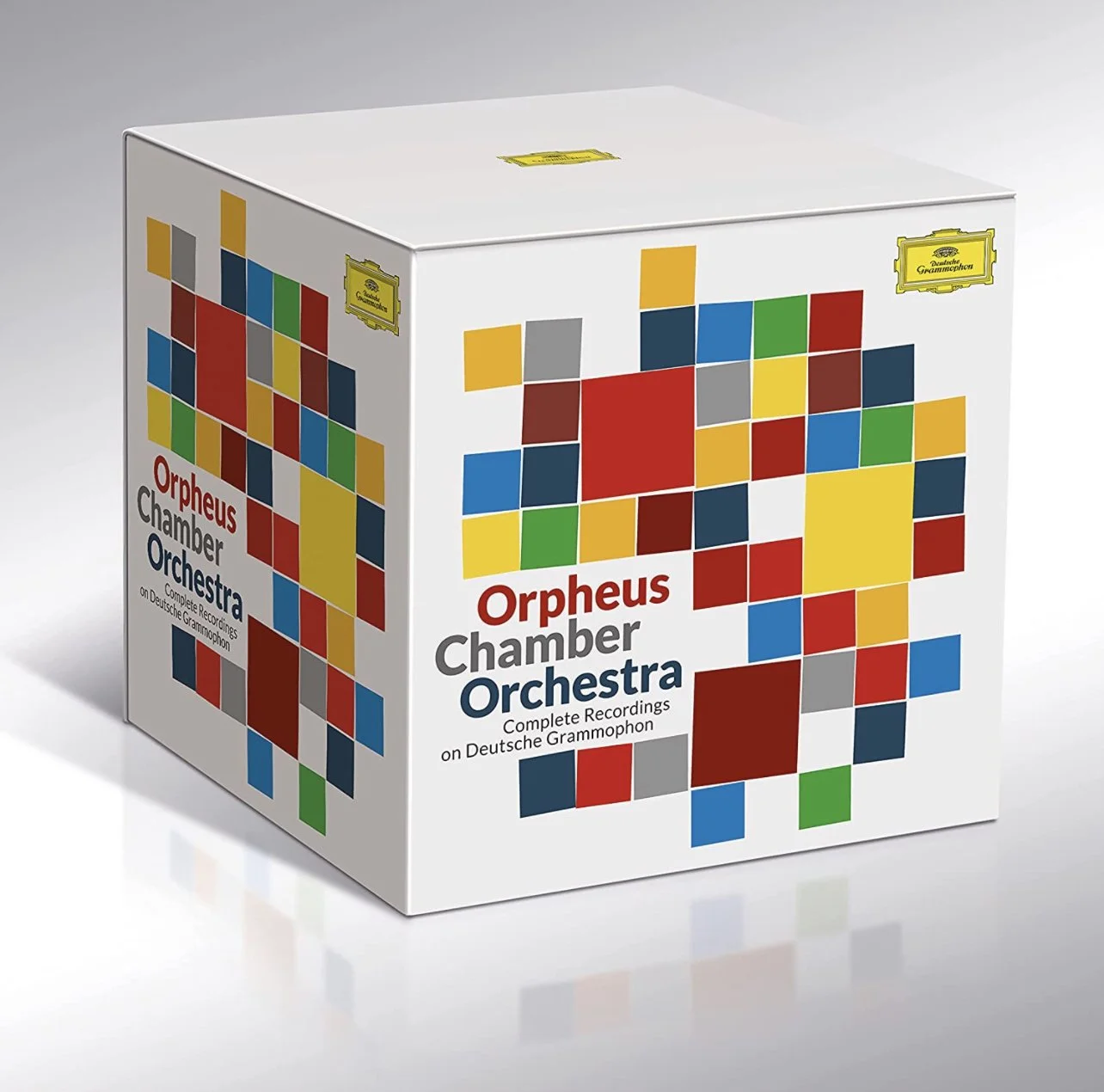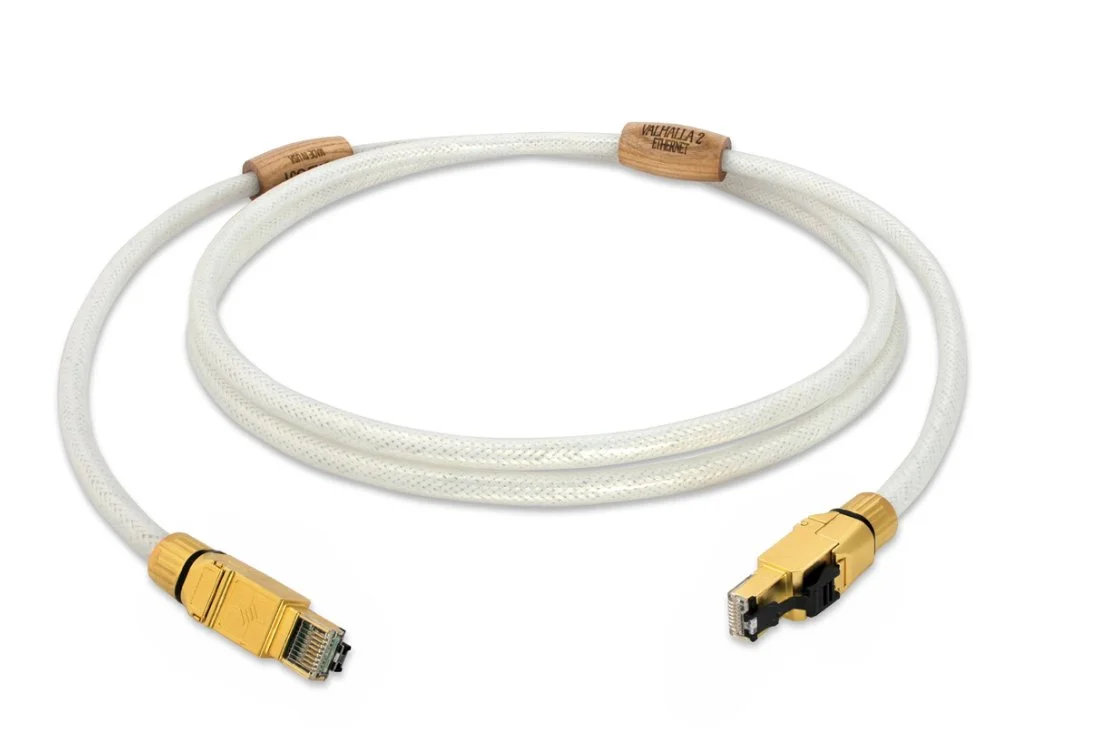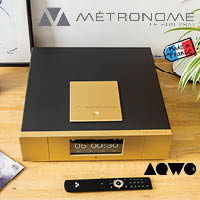Alta Audio Alyssa Loudspeaker
If you could go back in time to when you first started your audiophile journey, what advice would you give yourself? For me, it’s an easy answer: save up and purchase the best speakers you can afford. Speakers are arguably the most basic and important audio component in your system. If pure sound and its enjoyment follow the audiophile’s mantra, then start here.
Below is a follow-up review of the Alyssa loudspeakers from Alta Audio. A first in-depth review was done by Audiophilia’s Michael Johnson where he detailed specs and interviewed owner/designer of Alta Audio, Michael Levy. Check it out, it’s a good one.
So, why write a follow-up review of the Alyssa speakers? First, these speakers have impressed many audiophiles, their sound quality, build and aesthetics have resulted in rave-reviews almost everywhere, and Alta Audio speakers have been a favourite of Audiophilia writers for some time now with many reviews of their products. They’ve also chosen them as products of the year. Another reason for the follow-up coincided with me looking for years to upgrade my system. Several speakers were on my list, but I decided to try the Alyssas first because they came highly recommended.
A follow up review seemed a worthwhile endeavor: a new subjective experience, a different room acoustic response and in-depth analysis of an important audio component, we believed was a good idea. After all, isn’t music through quality speakers supposed to be savored by listening to again and again? As Schopenhauer said: ‘How full of meaning and significance the language of music is, we see from the repetition signs, as well as from the Da Capo which would be intolerable in the case of works composed in the language of words. In music, however, they are very appropriate and beneficial; for to comprehend it fully, we must hear it twice’. (The World as Will and Representation, my italics).
There are many variables to consider when researching which speakers work best for you and for your listening room. Yes, you can follow the seasoned audiophile instructions of positioning and audio equipment pairing, however, your experience of sound and acoustics in your room are key. A little room acoustics knowledge can go a long way in helping to appreciate and find the sound you are looking for. If you are in the market for high-end speakers and want to get your money’s worth, I’d suggest finding some time and immerse yourself in how to make your room more acoustic friendly.
The Alta Audio Alyssa Loudspeakers are the most affordable speakers from Alta Audio ($5000/pair; Beechwood and Rosewood finishes are an additional $1000). When you see them for the first time, they make an impression with beautiful design and a remarkable finish. Mine are in piano black. When I opened the box, a pair of white linen gloves evoked a sense of quality equipment (they are packed well in their boxes covered in a black satin-like material), but they also conveyed a musicality to them, as if I were holding a rare and expensive instrument. For a second I thought of a brand new Paul Reed Smith Private Stock guitar crafted to perfection and ready to be played. Because of their bell-like shape and piano gloss black finish, they give (as some friends have told me) a ‘Darth Vader’ vibe. They look pretty cool.
The Alyssa speakers are heavy, 28 lbs. each, with an impressive 2 1/2 inch ‘high speed’ ribbon tweeter (more on this later), a 6 inch midrange woofer, 87.5 dB/2.38 volts sensitivity and 4 Ohms. To drive them you'll need 50-150 Watts per channel. The cabinet is distinct—Alta Audio used a hybrid design of tuned port and transmission line (radiating air forced through what might be called an internal labyrinth behind the bass driver).
The Alyssas have little damping (for reflection prevention), this allows for a more natural sound and a tighter low-end sound by also lessening driver motion. The inside of these speakers is a marvel of design as well, with its custom made drivers: the tweeter is a pure aluminum ribbon (made by Fountek) and in the construction of the woofer you find titanium (made by the Morel company). Both drivers are highly modified by Alta Audio.
I’ll continue with my description of the sound of these Alta Audio speakers but first let me point out some aspects of my listening experience I think I denied for years (perhaps you have as well) and how poor my listening room was. Little by little though, I began to acknowledge its importance with research and the good people here at Audiophilia, so I decided to go a step further and dive head first into the science of acoustics.
Room Acoustics
Levy comments from the owners manual:
The acoustics of the room are nearly as important as any component of your system. A good room is neither too live (reflective) nor too dead (absorptive). Imaging is best achieved in a symmetrical setting with the walls behind and to the sides of the speakers, while the walls behind and to the sides of the listeners are reflective. This is called the Live End Dead End room (LEDE).
I had the opportunity to speak to Audiophilia’s publisher Anthony Kershaw as well as Levy, about my listening room. There were back and forth conversations to better understand how the Alyssas would sound better. It was as if we were in front of those big green chalkboards writing mathematical formulas to find the best place for the Alyssas. I took some pictures of my home and sent my listening room dimensions to both of them, my audio equipment was discussed as well and the all around feel for what I expected from a speaker.
Acoustics researcher Anthony Grimani (inventor of Surround EX and developer of the Home THX program) claims ‘room acoustics are at least fifty percent the sound and quality of what you hear’, this made sense, but complications emerge as to how to go about this. How do you understand the acoustic character of a room? First is to read up on the vocabulary of acoustics: direct sound, first reflection, acoustic defects, just to name a few. For accurate sound production from speakers to ears, many things need to be in place. How does the sound bounce off spaces, objects, walls, corners, ceiling? How does the room change the pattern of frequencies? Do lower frequencies appear flat related to the size of the room and how can audio clarity be achieved? I was about to find out.
Specifications & Features
Height: 14.5 inches, 15 inches with spikes
Width: 8 inches at top, 9.6 inches at bottom
Depth: 13.25 inches at top, 14.25 inches at bottom
Weight: 28 lbs
Driver complement:
– One 2 inch ribbon tweeter
– One 6 inch midrange woofer with Titanium Former
Sensitivity: 87.5 dB / 2.83 Volts @
Frequency response: 32Hz to 47kHz +/- 3 dB
Impedance: 4 Ohms
Requirements: 50 to 150 Watts per channel
Alta XTL Bass with DampHard faceplate
Alyssa rear panel in Beechwood.
Setup
The Alyssas were mounted on Monolith 28” stands powered by my trusted PS Audio Stellar Strata Integrated Amplifier with its streamer running through my MacBook Air from Tidal HiFi and Apple Music. Analog duties included the majestic tank that is my Mark Levinson 5105 Turntable with a Phasemation PP-300 MC Phono Pickup Cartridge and Ifi iPhono3 Black Phono Stage and a second turntable, a Thorens TD-165 with an Ortofon 2M Blue Phono Cartridge and Schiit Audio Mani MM Phono. For SACDs and Red Book discs, the PS Audio PerfectWave SACD Transport.
Changes in my listening room and the Alyssa's sound
All of us who desire pure sound learn to live with obstacles that come from having an inadequate acoustical room. But, as I wanted to invest in high-end sounding speakers I’d have to take all of this information and begin to become more acoustically minded. I purchased two rugs, moved furniture and isolated some cracks and corners. I was able to find the best positioning for the Alyssas; I also (through trial and error) found the correct direction related to my chair listening position (the height of said chair was also measured), also the toe-in factor was revised.
Size matters and the depth of the Alyssas (14.25 inches at bottom) is ample, so several stands were used for stability and after a few months I decided on the Monolith 28” stands. Distance from one speaker to the other was also salient. Levy commented on the positioning of the Alyssas: The sweetest spot is between and in front of the speakers from a distance equal to 1 1/2 times the distance between the speakers. So, that’s what I did.
Every corner in my room, every object obstructing the speakers, the type of floor I had, the windows near my listening room were all fair-game in the analysis of sound. For room corners I improvised and used materials as ‘absorbers’. This experience was as if I were fitting my room for an expensive suit, high-end sound couture for the Alyssas. The modifications I made helped—I can now hear a big difference in my room, but I still have a long way to go; for reverberation I still needed panels, bass traps, back wall and ceiling diffusers, but it’s a process where patience is key.
Finally, perhaps my biggest obstacle, a variable of progressive change I could not control, the dreaded burn-in. These speakers really need a full break-in, some three hundred hours worth. This tested my patience a bit because even though I was making strides with my room, and understanding its dynamics, the speakers' sound changed during the first months. You’ll think ‘duh!’ Of course it changes! But if you’re working on setting up an entire room, any small change in sound I constantly thought could be either the Alyssas or the room, which for an obsessive mind like mine is not always fun. So, I tinkered once again with the room and positioning.
Alyssas in Rosewood.
Final sound impression of the Alyssa Speakers
So, what about the sound of these speakers after six months and an acoustic-friendly room you ask? In the beginning, it was a tale of two drivers. The ribbon tweeter was pristine-sounding from day one, not too bright so as to get tired if I was listening for an extensive period of time, but just right in the sweet spot, revealing and clean with a wide soundstage.
As is usual with a driver’s neoprene surround break-in, the first two months lacked bass. The response improved after a couple of months of daily listening. In the beginning, I threw everything at these speakers. When the tonearm of the 5105 lowered and touched the grooves of Porthishead’s Roseland NYC Live, the ‘thump’ characteristic of the band sounded tepid; the tweeter did most of the work. Imaging was there, but I found myself wanting more ‘thump’. Needless to say I was surprised so I emailed Levy and Kershaw about this—patience was their parallel request.
Later, I felt a synergy taking place between my room and the speakers. Rich texture followed the tweeter driver in every recording from dynamic string sections like Webern’s Six Orchestral Pieces under Sinopoli and the Dresden Staatskapelle (Warner) to fuller sounding vocals like Kathleen Ferrier’s A Recital Of Bach And Handel Arias with Adrian Boult and the London Philharmonic Orchestra (Decca). You’ll experience beautiful sound from the Alyssas even on mono recordings. On the Boult/Ferrier, there was a clear response with no distortion. Also with Bukka White’s Parchman Farm: the rhythm and voice sounded with the accurate frequency extension the recording demanded.
Finally, the bass developed and the XTL transmission line (a technology specifically from Alta Audio where the cabinet is tuned at multiple frequencies) of the woofer design made its appearance and a fast bass response had arrived.
I found the speakers controlled where they needed to be and when higher frequencies appeared the Alyssa’s handled them beautifully with a clear integration of instrumental voices in quick tempo and wide dynamics. As I write this, the sweet and engaging voice of Esperanza Spalding is ‘hovering’ in my living room. Her song ‘’Til the Next Full (eyes)’ sounds like waves in front of me and the non-linear sounds of the instruments (guitar especially) sound full and unfold like a spiral with layers of sound inviting me to a gathering of sorts.
One more album I tried was Thom Yorke’s The Eraser. This is a ‘show me what you’ve got’ speaker test. There’s a strong bass rhythm in practically every song and the Alyssas crushed it. Yorke’s voice is sublime and his range comes close to the edge and stays there. Magical. Finally, the album that stood out for bass response was Tim Alexander’s (Primus) and Maynard James Keenan’s (Tool) project Puscifer; the song ‘Queen B’ was masterfully done. It even got a standing ovation from my wife.
The Alyssa speakers’ high speed ribbon is superb. I find it fuller and more concise in certain genres of music now. The mid/bass clearly needed development/burn in but it ended up filling up the sound enough to expose some wicked bass lines in my vinyl and CD collection. The outstanding bass response doesn’t limit the colour of the upper-mids. Although my taste in music does not require a booming, door-thumping bass, it’s nice to know it’s there if I need it.
The last test was symphonic texture sound. I am a bit picky here, so I was very attentive to instrumental separation during symphonic movements. The results were captivating—the harps and timpani section were flawless in the Romantic compositions and there’s not only volume to the sundry brass fanfares, but clarity and crisp attack. And dynamic string bends during Kaija Saariaho’s aesthetically pleasing Mirrors or Olga Neuwirth’s lovely Remnants of Songs were clearly defined.
Conclusion
An acoustic-friendly room translates into more attentive listening, which in turn becomes a more enjoyable listening experience. Couple this with quality high-end speakers and you arrive at listening nirvana. I believe the Alta Audio Alyssa Loudspeakers are well worth the $5000/pair MSRP. As such, if this is your budget, I encourage you to seek them out and audition. Other audiophiles and reviewers were right—there’s little to dislike about the Alyssa speakers. I’d be hard pressed to find a better speaker in this price range for what they can offer your system. Highly recommended.
Further information: Alta Audio




























